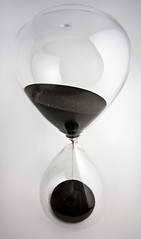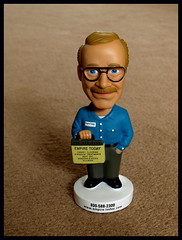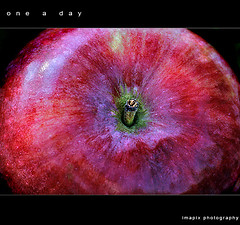
Web 2.0 and its ability to create relevant and authentic conversation - and then community - around a brand fascinate me. It's a topic that sits at the heart of
The Age of Conversation - Why Don't They Get It? It's also a topic that I explore in a white paper titled "
A Firsthand Tale of Adopting Web 2.0 Technology to Build Brand" that recently appeared in
Perform.
Perform: The Marketing 2.0 Authority is
Montgomery Research's newest publication. Its inaugural issue went live on Monday, May 19
th, 2008. with the following
Preface:
The Web has changed marketing forever.
Global 2000 companies continue to struggle with integrating a multitude of fragmented campaigns while maintaining a globally consistent brand. Marketers throughout all industries are caught between the need to deliver short-term results and the imperative to implement forward-looking brand management strategies.
These are among the stay-awake issues we’ve addressed in the premiere issue of Perform: The Marketing 2.0 Authority. We link the “why” of thoughtful strategy and branding to the “how” of effective tactics and implementation. This broad range of exclusive and uniquely powerful content written by analysts, consultants, vendors and industry experts provides you with a thorough board-level briefing on the most urgent topics facing marketers today.
We pay special attention to ROI. Exactly how do you measure the effectiveness of your online marketing and advertising efforts? Why is the “last ad” methodology not up to the task? What can you replace it with to get a more accurate snapshot of what you’re getting in return for your online marketing dollars? Our experts pose some of the most provocative thought leadership on these topics that you’re likely to find anywhere.
We raise – and answer – other questions as well. How do you build customer communities without alienating users already skeptical of marketing? How can you create your own viral marketing events? What’s the most effective use of blogging? How do you manage the two-edged sword of user-generated content?
Read on to find out the answers to these questions and more. The insight contained in these pages will forever change the way you think about online advertising – and inspire you to take action in ways that will have an immediate and dramatic impact on your online marketing and brand management strategies.
The publication topics include:
+ Strategy 2.0,
+ The New Brand Dialogue,
+ Marketing 2.0,
+ Media,
+ Lead-Gen and Search, and
+ Delivering the Customer Experience.
My chapter description reads: As marketing evolves into a two-way conversation that technology enables, it changes how we interact with customers and the value we offer the marketplace. Traditional marketing – based on interruption, forcing oneself on others and being loud and mostly irrelevant – becomes obsolete. It [also available via pdf here] appears in the New Brand Dialogue Chapter along with:
12 Essential Tips For Success in Social Media by Chris Kenton,
SocialRep.
Whether you call it social media or consumer-generated content, there’s no debate over the accelerating popularity of Internet sites and forums where consumers share opinions and experiences about every product and service imaginable. From blogs and
podcasts to
wikis and social networks, social media allows consumers to rate and review products, advise fellow consumers and even make their own commercials praising or bashing businesses and brands.
Amplify Your Brand Through The User ExperienceWeb Associates produces award-winning creative and innovative online marketing delivered through a single technology layer.
Engage or Perish: The Choice Is Yours by
Lewis Green, L&G Business Solutions.
Like the Industrial Age, the Conversation Age (often referred to as Web 2.0) requires businesses to change and recognize that the status
quo is unproductive and unacceptable. If your company is to remain competitive, increase market share and grow its business, the time to reinvent yourself is now. That means it’s time to invest in social media, specifically blogging, and add it to your marketing and branding toolbox.
Listening and Participating by
Toby Bloomberg, Bloomberg Marketing/Diva Marketing.
Social media is providing marketers with an array of tools and opportunities that offer an unusual
entrée into understanding the good, bad and ugly of how customers use and perceive brands, your company and even your employees. In today’s world, it is increasingly critical to understand your specific customer needs and to build business relationships both on a local and global basis.
New Channels Help You Find Your Missing Audience by Cory Van
Arsdale, Microsoft Corporation.
If it’s getting harder to reach your target market with TV and online ad campaigns, it’s likely because your audience has left the building. Or it could be they’
ve entered another world – a virtual world. But not to worry: you can still connect with them.
Q&A: Dennis Morrow from Web Associates.
As director of information architecture and usability, Mr. Morrow leads Web Associates’ holistic approach to combining user interface design, human factors and usability practices, resulting in positive user experience initiatives for the agency’s family of global brands.
Q&A: Keith Pigues from Business Marketing Association International.
Keith
Pigues is chairman of the board of directors for the Business Marketing Association International and a member of the Executive Leadership Council. In 2007, he received the Frost & Sullivan Marketing Lifetime Achievement Award and was recognized by B2B Magazine as one of the leading senior marketing practitioners. Since 2007, Mr.
Pigues has served as corporate senior vice president and chief marketing officer for Ply Gem Industries, Inc. He was previously VP of marketing at
CEMEX USA , where he led all branding, marketing and market development for the U.S. operations of the world’s largest building materials company.
The Art of Creating A Community from
Guy Kawasaki, Garage Technology Ventures
I admit it: I’m a user-group junkie. I got my first taste of user groups when I worked for Apple – speaking at their meetings was one of my great pleasures. Their members were unpaid, raging, inexorable thunder lizard evangelists for Macintosh and Apple II.
The Customer Advisory Board: A How-To Guide for The Internet Age from
Ross King, King Research.
Good market intelligence is imperative in today’s increasingly competitive environment. Product segments are
commoditizing; product life cycles are shortening; and with smart competitors in almost every segment,
CMOs and their teams need all the good market intelligence that they can get to develop and implement their marketing strategies.
The New Pay-to-Play Model in the Blogosphere from David
Binkowski, Haas MS&L
The old model of journalism is dying, at least online. Relationships between companies and media writers have been supplanted by a new business model. My European colleagues, particularly those in Germany, clued me in to how public relations “works” in their countries: If you want your material to appear in newspapers or magazines, you must purchase advertising. Of course, there are exceptions, but in these countries, public relations is considered part of advertising and is budgeted for media spends accordingly. Fabricated terms like “branded content,” “infotainment” and “
edu-
mercials” immediately come to mind.
The Power of Corporate Blogging: Some Guidelines for Doing It Right from Paul
Gillin, Paul
Gillin Communications
On May 31, 2006, The New York Times published an article by columnist Thomas Friedman that featured some pointed criticism of General Motors.
The Rise of Social Sales and Marketing from Ken
Pulverman, Oracle
The jury is in. Evolution
hasn’t really caught up with humanity’s highfalutin attitudes about our species’ uniqueness. Less than 100 years ago, human existence was purely about survival in most cultures. Our survival depended on our ability to work as a group. Like it or not, we are still essentially animals grouped in packs. We hunt in packs; we farm in packs; and, indeed, we buy in packs. It turns out that even our longevity is affected by the extent to which we engage with other groups of people.
Think Liquid from
Geoff Livingston, Livingston Communications
Regardless of technological change, the future of social media will be dictated by the community’s rapid adoption of new media forms. Change occurs dynamically in online communities as new applications develop. Though behavior changes, relationships must be maintained. That means successful marketers must use flexible strategies as they move forward with their online efforts.
Each chapter is equally filled with insightful perspective on Web 2.0 from amazing authors. I urge you to browse and read and learn. That's what I'm doing.
You can also browse by
White Papers if you prefer not to explore by Topic.
Thanks to
Diva Toby Bloomberg for the encouragement. This white paper takes my
Biz Blog Profile Series: Flooring The Consumer, Wear-Dated one step further and deeper as I continue my Web 2.0 journey.
Technorati Tags:
Montgomery Research Perform social media Perform white paper marketing marketing 2.0 Del.icio.us Tags:
Montgomery Research Perform social media Perform white paper marketing marketing 2.0
 June is literally around the corner. With that comes a momentous event in my life....
June is literally around the corner. With that comes a momentous event in my life....











